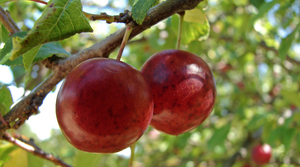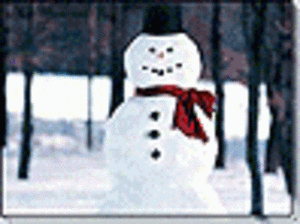Why You Need to Prune Your Plum Tree
Unpruned plum trees produce smaller fruit and less fruit in general. Pruning your plum tree keeps it a manageable size for harvesting plums and helps minimize insects and disease. Pruning young plum trees trains their branches to develop into good, well-spaced branches. It is particularly important to properly prune plum trees when they are young, as plum trees can be difficult to manage since they grow many different ways.
How to Prune a Plum Tree – A General Overview
How often to prune: Plum trees need to be pruned once every year.
How much to prune: Plums trees are fairly resilient, so you can initially prune as much as is needed to train the tree to grow properly. After that, prune as much as is needed to keep the branches well-spaced and free of dead branches.
Pruning tools: All pruners can have either anvil blades (which are straight) or bypass blades (which are curved). Bypass blades cause less damage to stems left on the tree and are easier to handle. Hand pruners should be used for stems that are less than ¾ inches. Lopping shears are intended for branches up to 1 ¾ inches in diameter and have long handles. Pole pruners are blades mounted on poles. They are used to cut branches up to 2 inches wide. Chain saws should be used for branches thicker than 3 inches.
Pruning larger branches: Make a small wedge cut on the underside of the branch a few inches away from the branch stem. This will keep the bark from pulling off in strips when you cut further up the branch. Next, cut the branch off above that wedge cut. Lastly, cut the rest of the branch off at a 45 degree angle near where the branch stems out of the trunk. You will want to avoid cutting what is known as the “branch collar,” which is the area where the trunk swells where the branch grows out of it.
Pruning smaller branches and twigs: Cut at an angle approximately 1/8-inch above where the branch sprouts from the tree. Be sure to cut at an angle so that water will flow off of the cut. Otherwise, diseases may harbor there.
Root health: It is important to remove any weeds or plants that sprout up at the base of the plum tree so that they don’t fight for the tree’s nutrients. It is best to dig such plants up carefully. If the plant cannot be dug up without disturbing the plum tree’s roots, the plant should at least be cut down.
Understanding Your Plum Tree
Plum trees can either become bushes or, if pruned correctly, can become tall, sturdy trees. When the plum tree is young, you can determine its course of growth. Trim the tree to have the first branch three feet above the ground if you want a bush. For a traditional tree, prune the trunk four feet above the ground, and for a pyramid shape, prune two feet above the ground.
When to Prune a Plum Tree
Plum trees should always be pruned in June. Do not prune during a damp day.
What to Remove when Pruning Plum Trees
It is good to know that plum trees do not produce fruit until they are four or five years old. When pruning a plum tree for the first year, prune each branch by approximately one-third its own length. Prune right above a bud and then remove the upper-most bud, leaving several buds lower on the branch. You’ll want to leave 5 to 9 strong branches shooting off of the trunk.
Plum trees don’t require that much pruning after the initial development years. In subsequent years of pruning, cut off dead or damaged branches and wood, and any leaves that are discolored or damaged. Prune off any new branches as necessary to help maintain the desired shape of the tree, and any branches that are conflicting with other branches. If growth is too thick in a particular area, branches should be thinned out in that area to encourage ventilation and sunlight. Branches that are too close to the ground should also be cut off.
Post-Pruning Habits
Always disinfect your pruning tools after using them to ensure that diseases aren’t spread to future trees. One part bleach to 9 parts water is a good cleaning solution for pruning tools. If you know that the tree you are pruning is diseased, it is wise to disinfect the pruning tool after each branch or leaf you cut. If large cuts (over two inches in diameter) are made, seal the cut with pruning paste. Dispose of all trimmings so as not to potentially spread disease.
If you ever have specific questions about pruning, your local garden store should have knowledgeable professionals. To find information online, try searching the forums here or read more about plum tree pruning here.




